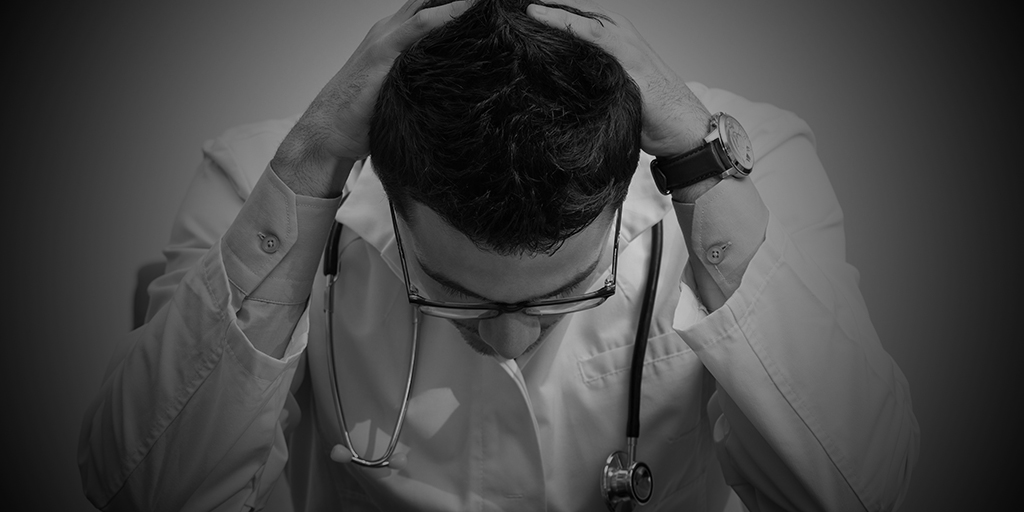7 Disturbing Stats About Physician Burnout (and How You Can Avoid Them)

The Merriam-Webster dictionary defines the word “burnout” as “exhaustion of physical or emotional strength or motivation usually as a result of prolonged stress or frustration.”
Few career choices can produce this kind of prolonged exhaustion like that of a health care professional.
As such, it’s only logical that physicians tend to experience burnout at a much higher rate than the general population.
This phenomenon can not only impact the health and wellbeing of the practitioner, but it can also affect his or her ability to adequately deliver care.
Some of the many problems that can arise when a physician is feeling burnt out include impaired judgment, communication issues and lack of attention to detail. This can lead to frustration, disappointment and even depression.
In other words, it’s not a good situation for anyone.
That being said, here are seven statistics that show just how serious the problem of physician burnout truly can be.
- 55% of those practicing family and internal medicine say they feel burnt out. That number rises to 59% for those in emergency medicine. (Interesting Facts on Physician Burnout in 2017)
- Most surveyed health care professionals listed too many administrative tasks as one of the biggest causes of frustration. Closely following was too many hours at work and increased practice computerization. (Interesting Facts on Physician Burnout in 2017)
- 69% of male physicians and 67% of female practitioners report being happier outside of work than in the workplace. (Emergency Physician Lifestyle Report 2017)
- Medical students experience depression at a rate of 15-30% higher than that of the general population. (Physician and Medical Student Depression and Suicide Prevention)
- 67% of medical professionals say they are likely to stop practicing within the next five years as a result of burnout. (How Do We Restore Joy to the Practice of Medicine?)
- Each year, 300-400 physicians commit suicide. That’s a rate of almost a doctor a day. (Physician and Medical Student Depression and Suicide Prevention)
- Individuals in the medical field are nearly twice as likely to suffer from burnout as the general population. (Physician Burnout Rates Top 50% in US)
Not sure if you or someone you know may be experiencing burnout? Here are a few telltale signs:
- Constant state of exhaustion
- High tolerance to stress
- Lack of self care
- Poor work/life balance
- Decline in mood
- Quick to anger
- Obsession with thoughts about work
- Feelings of being stuck
- Poor job satisfaction and/or performance
If you or someone you know is experiencing any of these symptoms, the problem may be bigger than you think.
To address the situation, taking time off is recommended. If feelings of severe stress, anxiety, depression or suicidal thoughts are present, seeking professional help is the wisest thing to do.
Managers can also help by identifying stressors in the workplace and finding ways to reduce and/or eliminate their impact on employees.
Physician burnout is a serious problem that is steadily rising, year after year.
The most important thing to note is that admitting there’s an issue is nothing to be ashamed of, nor is seeking the help needed to overcome those negative feelings and emotions.
To the contrary, not only will addressing burnout potentially save your patients’ lives, but it could save yours as well.
For more health care industry tips and resources, bookmark our blog and check back often for new content.
